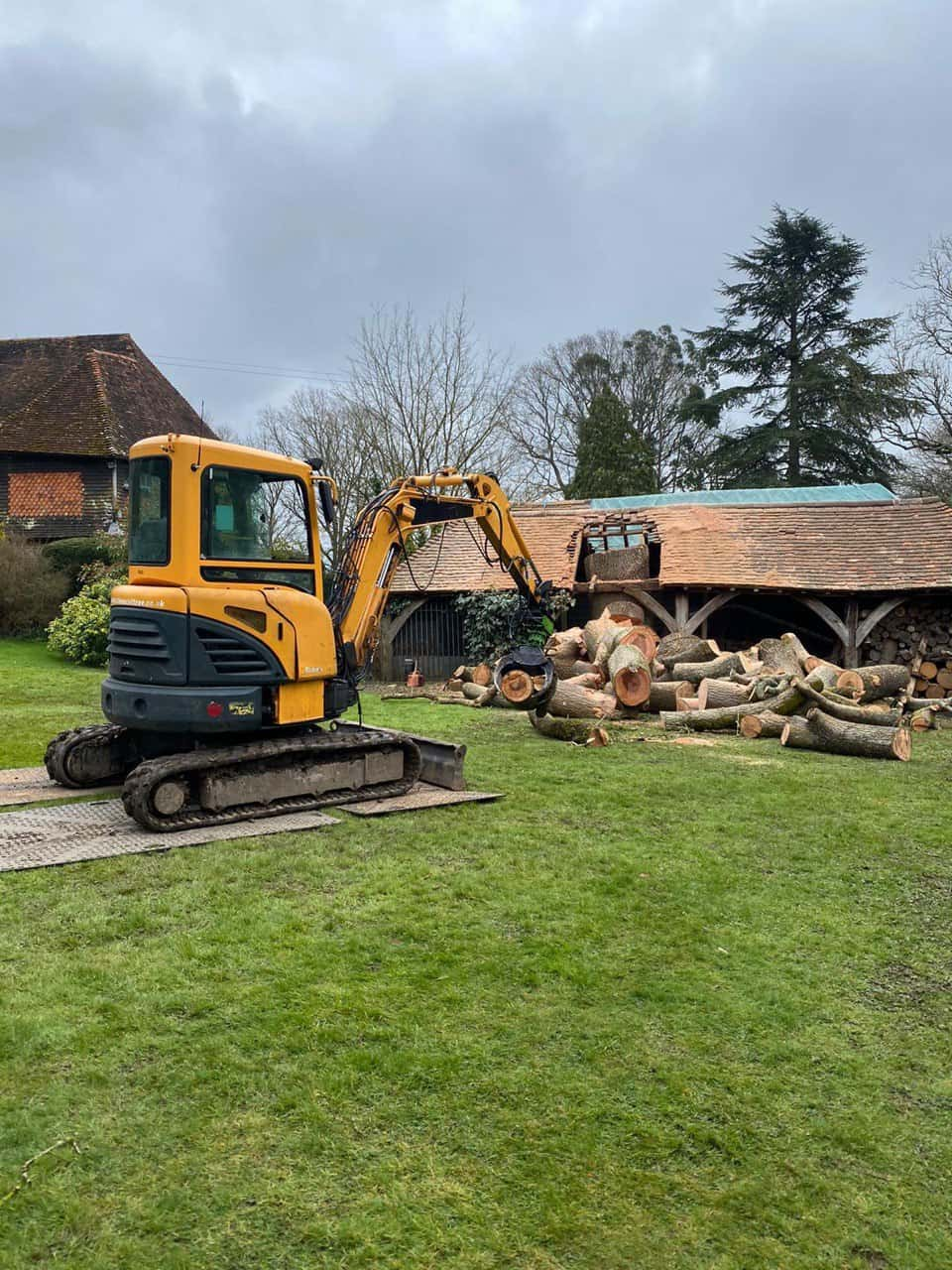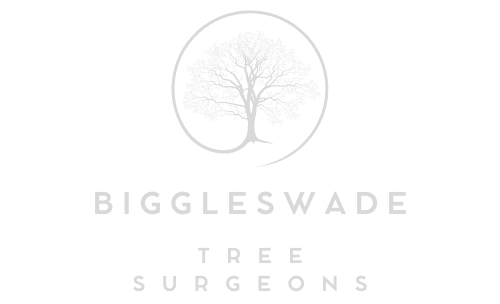The Early Warning Signs of Dangerous Tree Lean
A tree leaning slightly isn’t always a cause for concern, but when that lean becomes more pronounced or develops suddenly, it can signal a serious structural issue. Trees under stress from root damage, decay, or strong winds may begin to tilt in ways that threaten nearby property or safety. Understanding the early warning signs of a dangerous lean can help you act before a tree becomes unstable. At Biggleswade Tree Surgeons, we provide professional assessments across Biggleswade, Bedfordshire, to identify and manage leaning trees safely and effectively.
Why Trees Lean
Trees can naturally lean as they grow towards sunlight or adjust to prevailing winds. However, not all leans are harmless. The danger often lies in why a tree is leaning.
- Root instability: When roots lose their grip due to soil erosion, compaction, or decay, the tree may begin to tilt.
- Soil saturation: Excess moisture after heavy rain can soften the ground, reducing the tree’s anchoring ability.
- Structural imbalance: Uneven canopy growth or loss of major limbs can shift the tree’s weight and centre of gravity.
- Wind stress: Consistent exposure to strong winds can gradually pull a tree in one direction, especially if its roots are shallow or damaged.
Recognising these underlying issues early can prevent sudden collapses and allow time for safe intervention.
Early Signs of Dangerous Lean
1. Sudden Change in Angle
If a tree that once stood upright begins leaning more noticeably within a short time, it’s a clear warning that its root system may have been compromised. Gradual leans that develop over years are generally less dangerous, but any rapid shift should be treated as urgent.
2. Uplifted or Cracked Soil at the Base
When roots start to fail, the soil around the base of the tree may lift, crack, or separate on one side. This is a classic indicator that the root plate—the foundation keeping the tree stable—has shifted. In severe cases, you might see exposed roots or gaps forming on the opposite side of the lean.
3. Visible Root Damage
Roots anchor the tree and absorb essential nutrients. If they’re decayed, cut, or compacted by construction or heavy vehicles, the tree’s stability will weaken over time. Look for signs such as soft or rotting roots, fungal growth, or hollow areas at the base.
4. Cracks or Splits in the Trunk
Structural cracks along the trunk, particularly on the side opposite the lean, suggest that the tree’s internal fibres are under stress. This damage can progress quickly, increasing the likelihood of trunk failure during storms or high winds.
5. Canopy Imbalance
If one side of the canopy appears heavier or denser than the other, it may be pulling the tree off-centre. Over time, this uneven weight distribution puts additional strain on the trunk and roots, leading to instability. Regular pruning helps to maintain an even canopy and prevent this problem from worsening.
Assessing Risk Levels
Not all leaning trees are immediate hazards, but professional evaluation is essential to determine whether the lean is stable or progressive. At Biggleswade Tree Surgeons, we assess several factors to determine the risk:
- The degree of the lean and direction it faces
- The proximity to buildings, roads, or public areas
- The condition of the roots and surrounding soil
- The overall health and species of the tree
Each of these factors influences whether corrective pruning, cabling, or removal is required to ensure safety.
The Role of Weather and Soil Conditions
In areas like Biggleswade, Bedfordshire, fluctuating weather can rapidly affect soil stability. Extended wet periods can loosen root systems, while dry spells cause shrinkage and cracking in the soil. These cycles create instability over time, especially in older or larger trees. Monitoring changes in ground conditions helps identify when additional support or intervention might be needed.
Preventing Dangerous Lean Through Maintenance
Regular maintenance is the most effective way to prevent tree lean from becoming a safety concern. Key preventive measures include:
- Routine inspections: Detect small changes in lean or structure early.
- Crown reduction: Reduces wind resistance and weight load on the trunk and roots.
- Root zone care: Avoid compacting soil around the base of trees.
- Proper drainage: Ensures roots remain stable during wet conditions.
Engaging experts like Biggleswade Tree Surgeons ensures that corrective actions are applied safely, preserving both the tree’s health and your property’s security.
When to Act
If you notice any sudden leaning, soil displacement, or visible cracks, it’s important not to delay. Trees that are actively moving or showing signs of distress may collapse without warning. A professional inspection can determine whether stabilisation is possible or if removal is the safest solution.
Conclusion
A leaning tree can be more than an aesthetic issue—it can be a sign of hidden structural failure. Identifying the early warning signs of dangerous lean allows property owners to take timely, informed action.
For expert advice and reliable tree assessments in Biggleswade, Bedfordshire, Biggleswade Tree Surgeons provides professional solutions that prioritise safety, tree health, and long-term stability. With the right care and maintenance, leaning trees can often be managed safely before they pose a serious risk.
Call us on: 01767 660 596
Click here to find out more about Biggleswade Tree Surgeons
Click here to complete our contact form and see how we can help with your tree needs.

